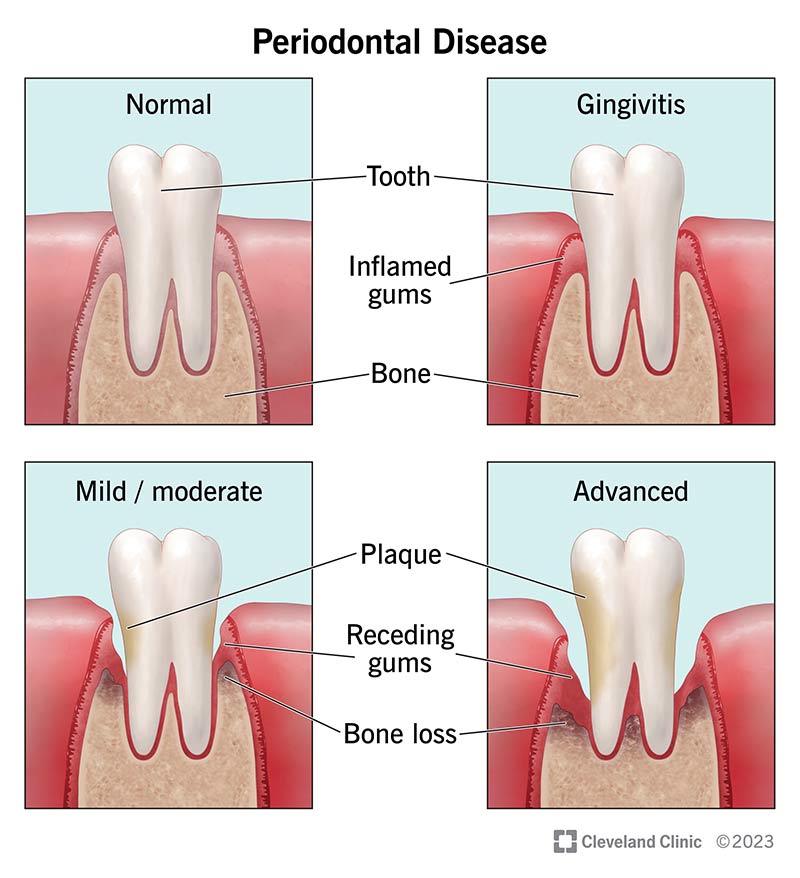Periodontal disease, commonly known as gum disease, affects millions of people worldwide. Left untreated, it can lead to tooth loss, bone damage, and even systemic health problems. Fortunately, there are effective treatments available, and scaling and root planing (SRP) is often the first line of defense. This non-surgical procedure is essential for managing the early stages of gum disease and preventing its progression.
What is Periodontal Disease?
Periodontal disease begins with the accumulation of plaque—a sticky, bacteria-filled film—on the teeth. When plaque isn’t removed through regular brushing and flossing, it hardens into tartar (calculus), which irritates the gums. This causes inflammation known as gingivitis, the earliest stage of gum disease. If untreated, gingivitis can advance to periodontitis, where the gums pull away from the teeth, creating pockets that harbor more bacteria. As the disease worsens, it can destroy the bone supporting the teeth.
How Scaling and Root Planing Works
Scaling and root planing is a deep-cleaning procedure designed to eliminate plaque and tartar buildup from both above and below the gumline. It also smooths out the roots of teeth, which helps gums reattach and heal properly.
- Scaling: The dentist or dental hygienist uses specialized tools to remove plaque and tartar from the surface of the teeth and beneath the gumline, including the deep pockets that develop with periodontitis.
- Root Planing: After scaling, the next step is root planing, where the rough areas on the tooth’s root surface are smoothed out. This makes it harder for bacteria to cling to the roots and helps the gums reattach to the teeth.
Why Scaling and Root Planing is Important
Scaling and root planing is crucial for stopping periodontal disease in its tracks. Without this treatment, gum disease can worsen, leading to bone loss, receding gums, and eventually tooth loss. Additionally, periodontal disease has been linked to other serious health issues like heart disease, diabetes, and respiratory problems, so treating gum disease early can have benefits beyond oral health.
Benefits of Scaling and Root Planing
- Improves Gum Health: By removing the bacteria that cause gum inflammation, SRP helps reduce gum swelling, bleeding, and tenderness. With cleaner root surfaces, the gums have a better chance to heal and reattach to the teeth.
- Prevents Tooth Loss: One of the main risks of advanced gum disease is tooth loss. By removing the source of infection and reducing pocket depths, SRP can help stabilize teeth and prevent further damage to the bone and gums.
- Stops Disease Progression: SRP helps stop the disease from advancing by removing the bacteria that can destroy gum tissue and bone. Early treatment is key to preventing more invasive procedures, such as surgery, down the road.
- Supports Overall Health: Studies have shown that oral health is closely linked to general health. By controlling periodontal disease, you can reduce the risk of associated health issues like cardiovascular disease and diabetes complications.
What to Expect During the Procedure
Scaling and root planing is usually performed over two or more visits to ensure thorough cleaning. The procedure may involve the use of local anesthesia to numb the area and ensure your comfort. After the treatment, you may experience some mild discomfort, swelling, or bleeding, but these symptoms typically subside within a few days.
To enhance the healing process, your dentist may also recommend:
- Antibacterial mouth rinses
- Antibiotics to control infection
- Regular follow-up cleanings to maintain gum health
Aftercare and Maintenance
After scaling and root planing, it’s essential to follow a diligent oral hygiene routine to maintain the results. This includes:
- Brushing twice daily with a soft-bristled toothbrush
- Flossing once a day
- Using an antimicrobial mouthwash
- Visiting your dentist for regular check-ups and cleanings
Good oral hygiene will help prevent the re-accumulation of plaque and tartar, minimizing the risk of gum disease returning.
Is Scaling and Root Planing Right for You?
If you have signs of gum disease, such as red, swollen, or bleeding gums, bad breath, or receding gums, scaling and root planing might be the first step in restoring your oral health. Your dentist will evaluate your condition by measuring the pocket depths around your teeth and may take X-rays to assess bone loss.
In cases of mild to moderate periodontitis, SRP can effectively halt the disease and allow for gum tissue recovery. For more advanced cases, additional treatments like periodontal surgery might be necessary, but scaling and root planing is often the starting point for any comprehensive periodontal care.
Conclusion
Scaling and root planing is a vital treatment in the battle against periodontal disease. By targeting the bacteria and tartar that cause gum inflammation, this procedure helps preserve your teeth and gums while promoting overall health. If you’re showing signs of gum disease, don’t wait—early intervention can save your smile and protect your well-being.





Comments